Family : Chaetodontidae

Text © Giuseppe Mazza

English translation by Mario Beltramini
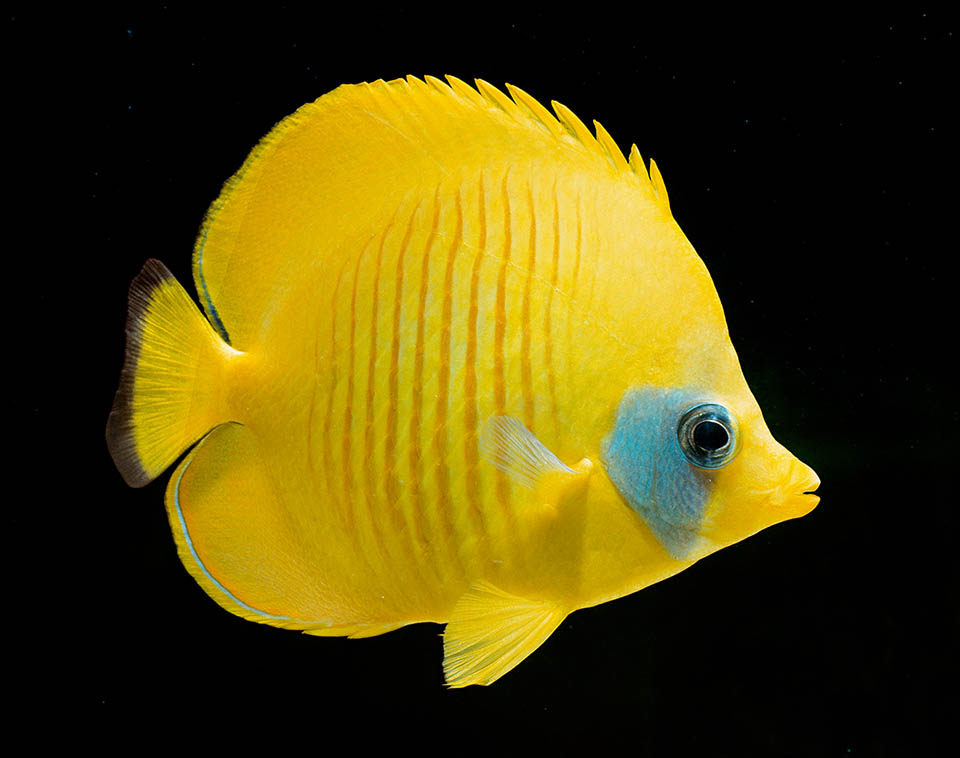
Chaetodon semilarvatus owes its Latin name to the blue spot masking only half of the eye in place of the usual dark vertical band © Giuseppe Mazza
The Bluecheek butterflyfish (Chaetodon semilarvatus Cuvier, 1831), belongs to the class of the Actinopterygii, the ray-finned fishes, to the order of Perciformes and to the family of Chaetodontidae.
The name of the genus Chaetodon comes from the Greek “χαίτη” (khaite), hair and “ὀδούς” (odous), tooth, due to the “bristle-shaped teeth”.
The name of the species semilarvatus comes from the Latin epithets “semi”, half, and “larva”, mask; it is, therefore “half masked”, due to the blue spot covering only part of the head.
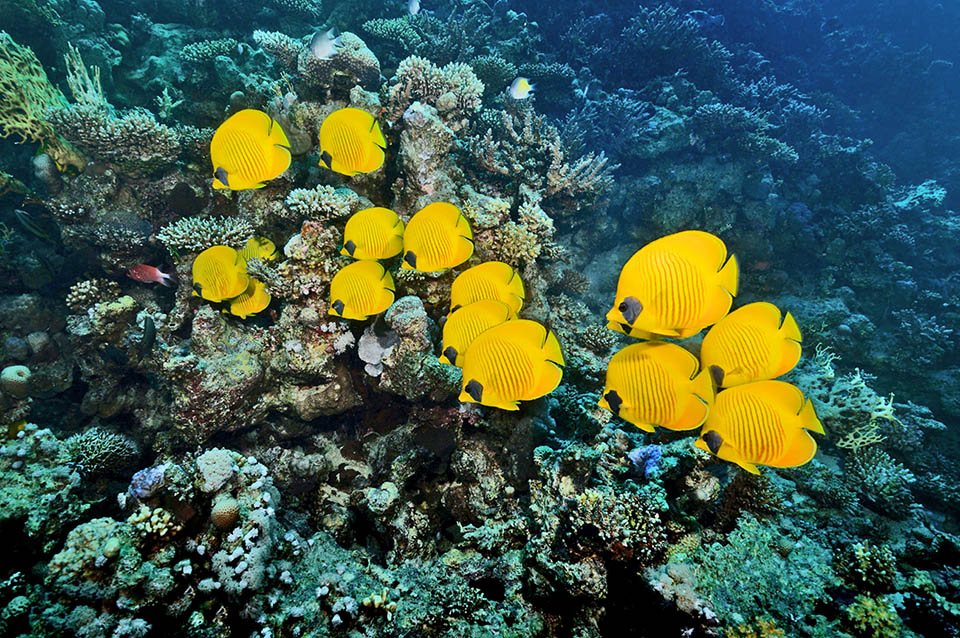
Common in the Red Sea and the Gulf of Aden, the Blue-cheeked butterflyfish lives in couple or in small schools of 10-15 units also in the western Indian Ocean © Francis Lau
Zoogeography
It is mainly present in the Red Sea and in the Gulf of Aden, but with small colonies also in other locations of the western Indian Ocean.
Ecology-Habitat
It swims in the shallow waters of the madreporic formations and along the border of the reefs, up to 20 m of depth.
Morpho-physiology
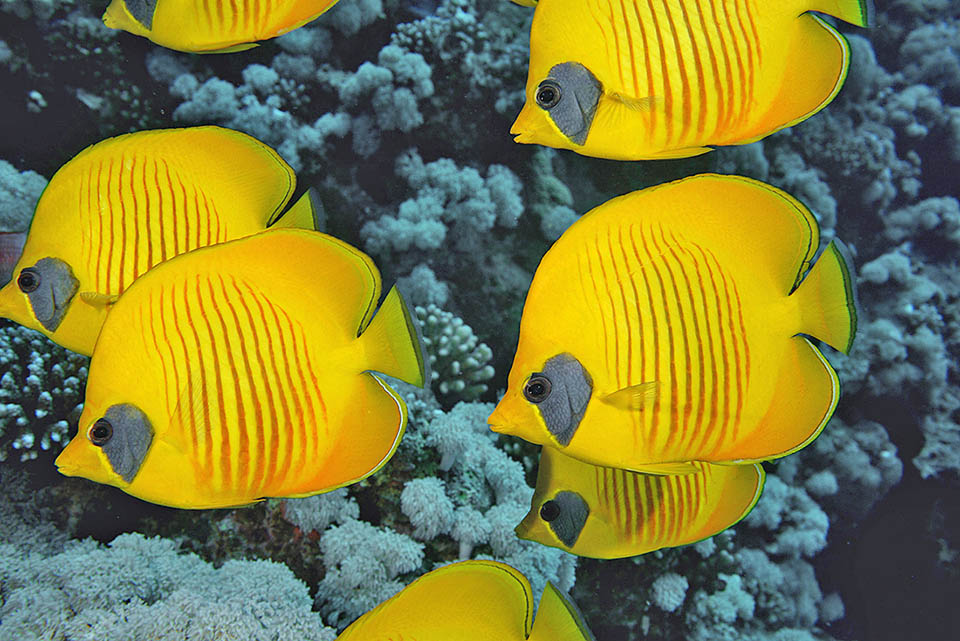
Flat and roundish with extended fins, it reaches even 20 cm, nourishing of the microfauna of the reefs, mainly madrepores’ polyps, but also of mollusks and crustaceans © Maurizio Lanini
Flat and roundish when the fins are spread, the bluecheek butterflyfish can exceed the 20 cm, but it measures, usually, about 15 cm.
There is only one dorsal fin with 12 spiny rays and 26 unarmed, whilst the anal has 3 spiny rays and 21 soft.
The ventral ones, of modest size, show one spiny ray and 5 soft; the pectoral, rounded, 15 unarmed rays; finally, the caudal is almost blunt.
The snout is relatively short and solid for a butterflyfish, with the mouth able to swallow even preys of a certain size.
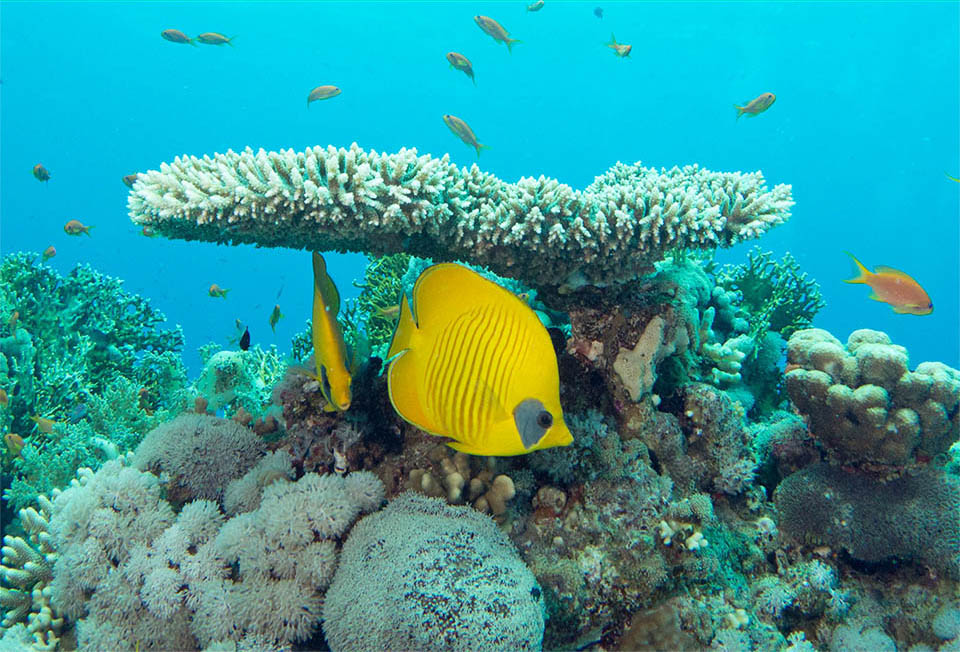
Couple sheltered by a madrepore of the genus Acropora, which protects them with its thorny ramifications from attacks from above © Jeremy Smith
The livery is unmistakable. Yellow with a blue spot, the “half mask”, which starts from the eye and interests the opercular zone, and it is evident also an elegant blue small edge just before the end of the soft rays for the dorsal and anal fins. Starting from the pectoral fins, the body is crossed by 12 vertical bands of red-orange colour, whilst the background yellow fades in warmer tones in the direction of the yellow tail, ending in a brown band.
Ethology-Reproductive Biology
The bluecheek butterflyfish has a carnivorous diet based on madrepores polyps, but it nourishes also of molluscs, crustaceans and generally of the small fauna of the reefs.
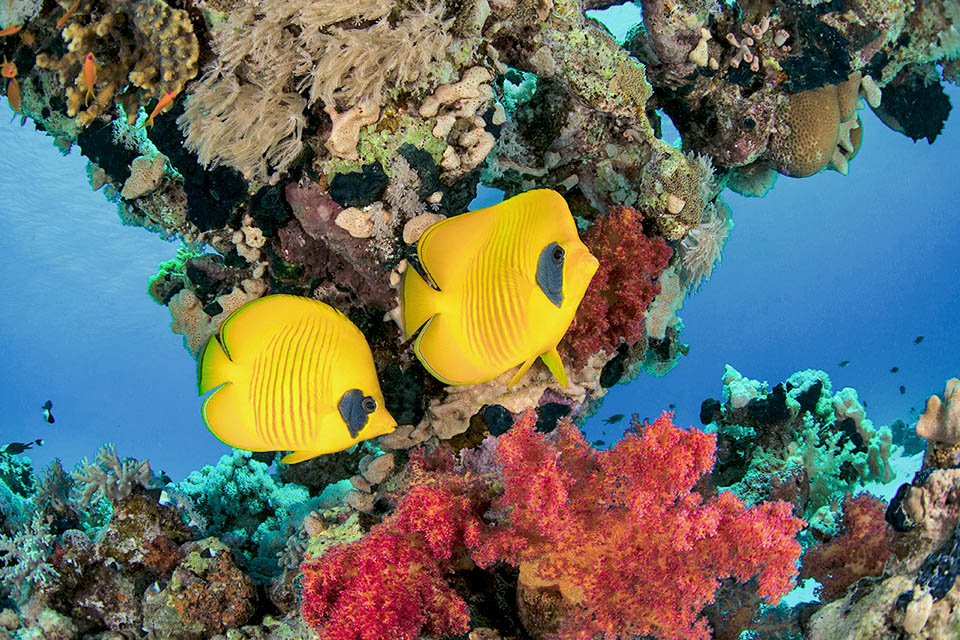
The fecundated eggs are entrusted to the currents. Resilience is good and it is not an endangered species © Maurizio Lanini
It lives paired or in small groups of 10-15 individuals, resting, often still, in mid-water, under the madrepores of the genus Acropora, which reassure it, from the attacks coming from above.
The reproduction is not collective, but paired. The eggs are pelagic.
Although threatened by the degradation of the reefs and by the aquaria trade, it is a species decidedly not in danger, with populations which may double in only 15 months and a very low fishing vulnerability index of 17 on a scale of 100.
Synonyms
Chaetodon melanopoma Playfair, 1867.
→ For general information about FISH please click here.
→ For general information about BONY FISH please click here
→ For general information about CARTILAGINOUS FISH please click here.
→ To appreciate the BIODIVERSITY of BONY FISH please click here.
→ To appreciate the BIODIVERSITY of CARTILAGINOUS FISH please click here.
